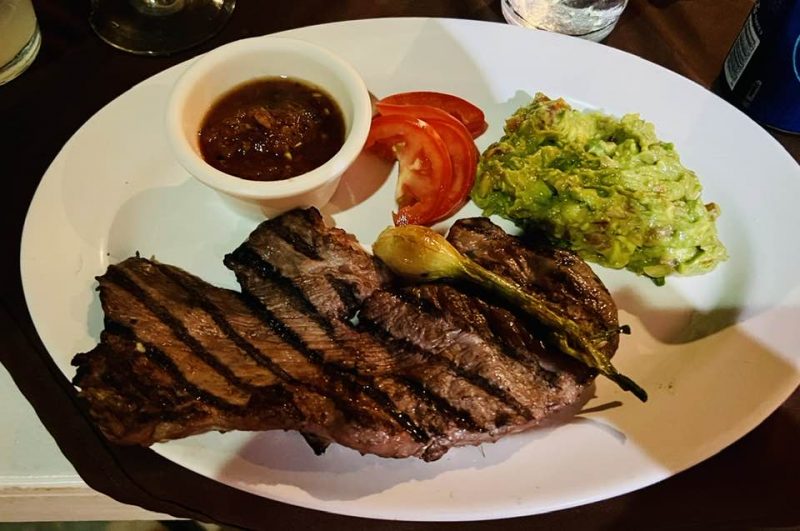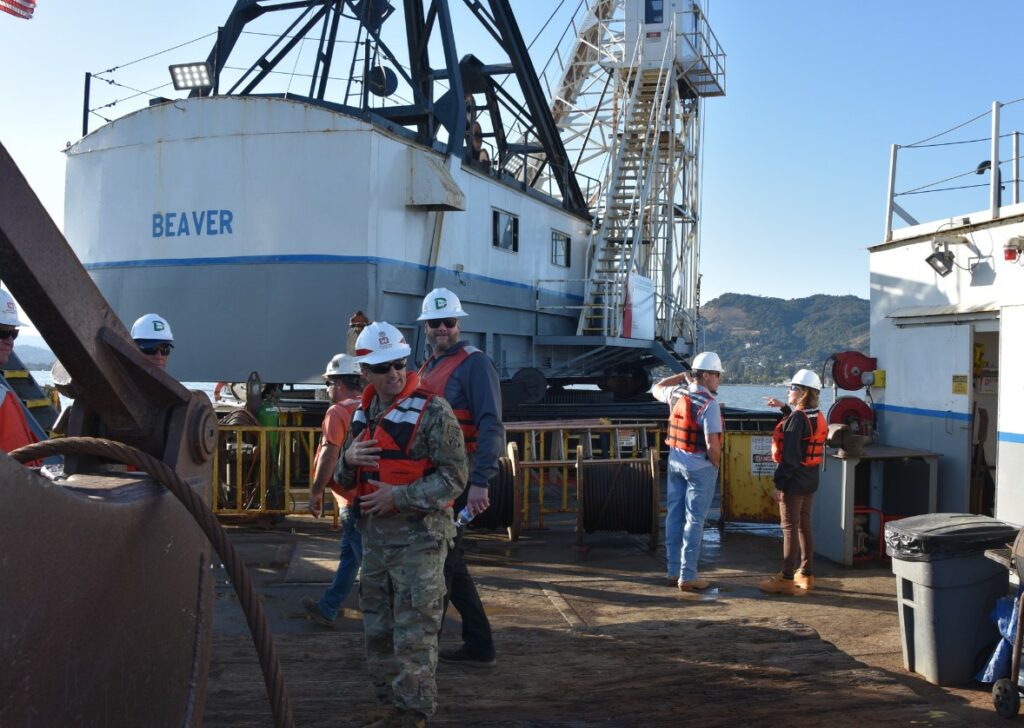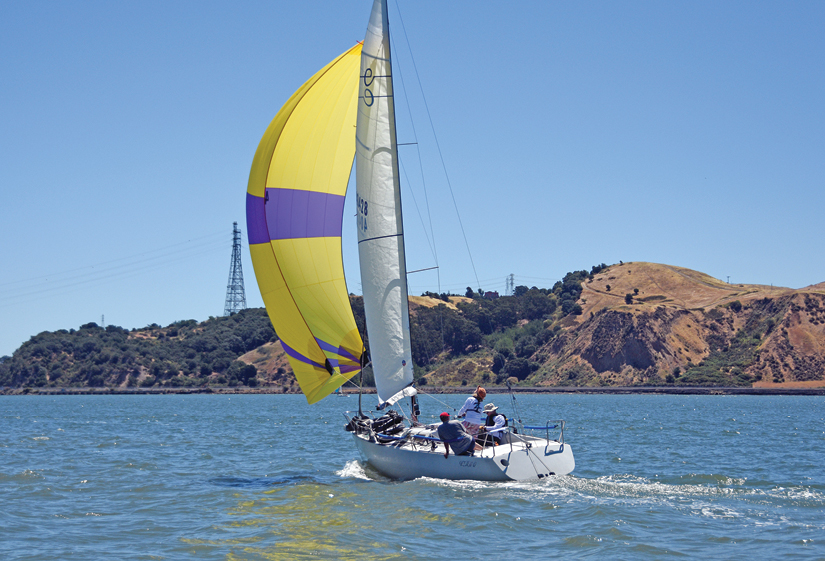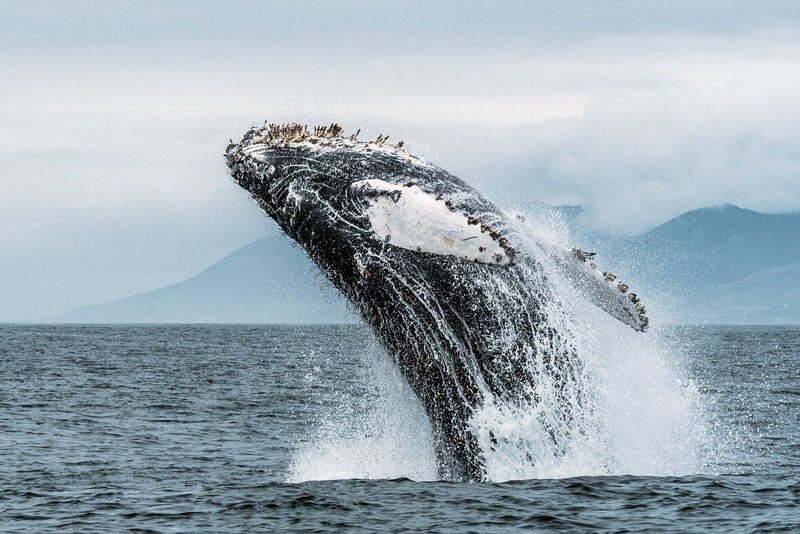
Counting Down to the Baja Ha-Ha’s Halloween Kick-Off
Last Monday we told readers there were only three weeks left before the start of the 28th Baja Ha-Ha. Today, we make that call for the two-week mark. And it feels a little like the annual countdown to Christmas. The Ha-Ha will take off from San Diego on October 31: yep, Halloween. But there’s nothing to be scared of, unless you’re unprepared, in which case anxiety may or may not make its appearance. To help keep it at bay, we’re sharing Part Two of the Ha-Ha’s Grand Poobah’s updates and tips. Have a read below, and make sure you can check all your boxes. That way you’ll be ready to sail off into the morning sun and head south to Mexico with an air of excitement and pleasant anticipation.
TEMPORARY IMPORT PERMITS:
By now everyone should have gotten their Temporary Import Permit (TIP) — or have a plan to get one when in San Diego at the Banjercito across the border from Otay Mesa, or in Ensenada. If the latter is the case, you must be certain that when searching your HIN on this site — https://portalsat.plataforma.sat.gob.mx/aduana…/index.aspx — your boat does not show up with an existing TIP. If there is an existing TIP you need to jump through a few hoops. Need help? Email [email protected].
OFFSHORE COMMUNICATIONS:
As per the Rally Instructions, each boat is required to have a functioning form of two-way long-distance communication, such as SSB, Garmin InReach, Iridium GO!, or Satphone. Starlink is fabulous, but it does not qualify because it works within only about 12 miles of the Baja coast. Cell phones don’t qualify for the same reason. If you do not have such a two-way device or do not know how to use it, you will not be an official entry. So if you haven’t purchased your device, do so immediately, and begin to familiarize yourself with it. These devices are terrific but more complicated than a cell phone, so be prepared to spend some time setting up an account and familiarizing yourself with how your device works. A tip for those who will be going with an InReach: Make sure you Bluetooth it to your phone or tablet, as it makes everything from the screen to the keyboard more user-friendly. A tip for those going with SSB: Installation is complicated and time-consuming, and it takes time to learn how to operate the unit. Even then, SSBs don’t work well. SSB installation guru Shea Weston is in San Diego and has solutions, but he’ll be swamped just before the Ha-Ha. In any event, now is the time to respond to Assistant Poobah Patsy Verhoeven with your Satphone or Iridium GO! phone number, or your inReach address (example: [email protected]). You will receive a testing text message in return from Patsy, who is the head of Fleet Communications. When you get the message, answer it, and you will be all set for your daily check-ins. “I want to encourage people to set up their device right away,” Patsy says. “And if they have questions or need help finding their inReach address, they should talk to me. Now is the time before everyone — including me — gets crazy busy.
WHAT DO MOST CRUISERS NOT BRING ENOUGH OF?
Shade and solar panels, or other sources of electric power such as a Honda 2000 portable generator. What do cruisers normally bring too much of? Food. There is no need to load up in the States as there is plenty of good food in Mexico.

GENERIC DRUGS IN MEXICO:
While recently getting his hip replaced in Mexico, the Poobah was warned by medical professionals not to purchase generic drugs from the ubiquitous little pharmacies that have popped up everywhere. Several professionals told the Poobah that the generics sold in these places have only about 25% of the drug they claim. The exception is Farmacias Guadalajara, where the Poobah was told the generics are the real deal.
If you’ve read and followed the above tips, and those we shared last week, then there’s a good chance you’re well prepared. Two weeks is not long to wait. See you in San Diego!
San Rafael Dredging Could Be Completed by End of November
In April we were able to bring you the news that the San Rafael Channel was set to be dredged over the summer. We can now tell you the dredging is underway, and may be completed by the end of November. The dredging is the first serious attempt at clearing the channel in 20 years. The channel harbors almost 2,000 boats and plays a key part in defending San Rafael against flooding.
Operations began last month, and Dredging Today reports that Dutra Group dredging crews have been working to reach a depth of eight feet in the outer channel, running out to San Pablo Bay. At the same time they are dredging the inner channel from the turning basin by Grand Avenue to Pickleweed Park, to reach a depth of six feet.

The San Rafael Channel was federally authorized in 1918, running from San Francisco Bay into northern Marin County. Its last full dredging took place in 2002, with a partial dredge being completed in 2011. During the intervening years, much of the waterway has been as low as zero to two and a half feet in depth during low tides.
According to the report in Dredging Today, city officials said the contractor plans to finish the project by November 30 — the end of the dredging season. If the work is not completed, they will return and finish the job next summer.
When fully complete, the San Rafael Channel dredging project will restore the waterway to its federally authorized depths of six to eight feet.
Plan Ahead With KKMI
Delta Doo Dah 14 — Take Me to the River
Just when we thought we were out of the COVID woods, the pandemic lurched out of hiding to mess up our plans. But more on that later.
For the first time since 2019, we were able to kick off our Delta Doo Dah cruising rally in person instead of via Zoom. Richmond Yacht Club graciously welcomed our sailors back, this year on the afternoon of Saturday, May 21. Craig and Ann Perez of the Express 34 Marrakesh presented their excellent Delta Cruising Seminar. It was spontaneously friendly, informal and interactive, with plenty of questions and comments from the participants. Part of the fun of this seminar is the show-and-tell aspect; Craig and Ann carted in a remarkable amount of gear and toys, and even demonstrated deploying an anchor right in the middle of RYC’s dining room.
We handed out door prizes thanks to donations from Owl Harbor, the California Delta Chambers, author (and fleet member) Jackie Philpott and Summer Sailstice. New this year was a beach-themed gift basket from John Maroulis, an agent for the New York Life office in Stockton, just down the road from Stockton Sailing Club.
Another excellent — and particularly fast — Delta Ditch Run came next on our itinerary, with some of our DDD fleet members sailing in the racing or cruising divisions of DDR. The DDR sails from RYC to SSC, mostly downwind in narrowing, winding and gusty waterways. Sailed on June 11, this edition had plenty of breeze and remarkably (but not record-breaking) early finishes. All the more time to enjoy picnicking on the lawn at SSC along the San Joaquin River, quaffing Mount Gay Rum and other libations. Due to the pandemic’s omicron surge, the clubhouse was closed to the big crowd on Saturday evening, but it did open on Sunday morning for the more lightly attended awards.

The best-laid plans began to go awry when Owl Harbor Marina underwent a wave of COVID infections and had to postpone their tenant BBQ, this year with a Roaring ’20s/casino theme. The big bash had been scheduled for July 30. The staff recovered, returned to work, and rescheduled the event for August 27. Next up on the official itinerary was Delta Bay Marina’s Delta Doo Dah weekend. Delta Bay, tucked behind tule berms along the San Joaquin River in Isleton, invited up to 20 of our fleet members to stay in their harbor for free on August 12-14. Unfortunately, earlier that week, Doodette Chris came down with the dreaded disease herself, and no other members of Latitude‘s small staff were available to fill in. So the weekend went on without us, but with plenty of leadership from other quarters.
Read on at Latitude38.com to see a full wrap-up of the fun had at the annual Dinghy Poker Run, trivia night, and other events.
Virtual Meeting to Cover Topics Concerning Boaters
Vivian Matuk of the California State Parks and California Coastal Commission writes to advise us of an upcoming virtual meeting. The topics will interest sailors and other waterway users.
“Join us, the California Clean Boating Network, on Wednesday, November 9, 2022, for a free and exciting educational virtual meeting,” announces Matuk. “Learn directly from California experts about top tier subjects impacting our waterways.”

Topics Include:
- The state of the microplastics science in California, how the EPA plans for monitoring and managing them, and some common misconceptions.
- The importance of monitoring sewage pumpouts and how it impacts boaters statewide.
- The impacts of expired marine flares. What California is doing to properly and safely dispose of these flares. What reusable options are available to reduce hazardous waste generation.
- The whales that reside off the coast of California. Their importance to our marine ecosystems. Challenges these whales are facing. Resources the public has to help with reporting and research.
“We look forward to sharing this knowledge with you and offering you plenty of time to ask questions.”
When and How:
- Date: Wednesday, November 9, 2022
- Time: 10 a.m. to approx. 12:15 p.m.
- You must register in advance for this meeting here. Register today to secure your virtual spot. Meeting capacity will be capped.
- After registering, you will receive a confirmation email from Zoom containing information about joining the meeting.
Details About Each Topic:
- All the Small Things: Microplastics Monitoring and Management (Scott Coffin, Ph.D. State Water Resources Control Board Division of Drinking Water). California’s Environmental Protection Agency is the first government body in the world to require testing for microplastics, including in drinking water, marine waters, animal tissue and sediments. Dr. Coffin will discuss the state of the science and the agency’s plans for monitoring and managing microplastics. He’ll dispel some common misconceptions along the way.
- Priming the Sewage Pumpout: Why We Monitor and How It Impacts Boaters Statewide (Georgia Tunioli, The Bay Foundation and Liz Juvera, San Francisco Estuary Partnership). Discharging sewage overboard creates environmental and human health problems, especially in a state with more than four million recreational boaters. To reduce the negative impacts of discharging sewage overboard, boaters are encouraged to use sewage management facilities, including pumpout and dump stations, floating restrooms, and mobile pumpout services. California’s Clean Vessel Act Education and Outreach teams in Northern and Southern California produced two reports this year on sewage pollution prevention: the CVA Pumpout and Dump Station Performance Report, and the Boater Sewage Disposal Survey Report. Tune in to hear about key findings and top takeaways.
- Collaboration for Conservation. Whales off the California coast are experiencing unique challenges. Resources are available to allow anyone to become a citizen scientist and help (Danielle Tentschert, Education Manager, Ocean Connectors). This presentation will discuss the whales that reside off the coast of California, their importance to our marine ecosystems, challenges these whales are facing, and the resources the public has to help with reporting and research.
- Expired Marine Flares in California (Vivian Matuk, California State Parks and California Coastal Commission, Yalin Li, California Product Stewardship Council and Cristian Centeno, Port of Los Angeles). Learn about the impacts of expired marine flares and what California is doing to properly and safely dispose of these flares, and what reusable options are available to reduce hazardous waste generation.
Register here, sooner rather than later.

